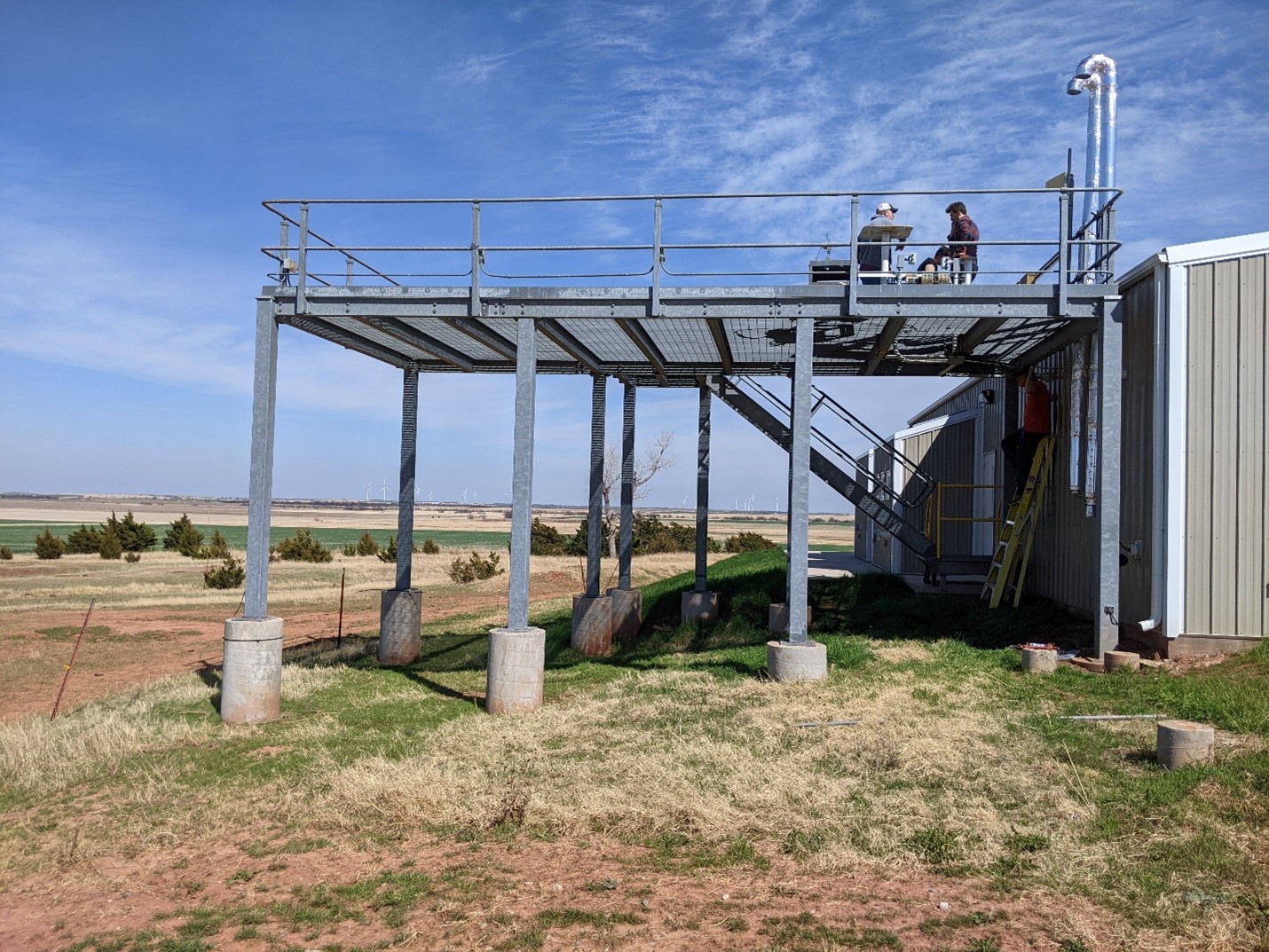Reviewing Ice-Nucleating Particles
PNNL researchers review how to best measure and model ice-nucleating particles

A new review article led by a team at Pacific Northwest National Laboratory analyzes the literature surrounding how researchers model and measure ice-nucleating particles.
(Illustration by Cortland Johnson | Pacific Northwest National Laboratory)
Ice-nucleating particles, or INPs, are tiny specks of material suspended in the air that act as starting points for the formation of ice crystals in clouds. By helping ice form in clouds, these particles play a key role in weather and climate. Researchers at Pacific Northwest National Laboratory (PNNL) have been studying how to best measure and model INPs.
Led by PNNL Earth scientist Susannah Burrows, a team authored a new review article that analyzes the literature surrounding INP modeling and measurements. In addition to summarizing what scientists currently know about INPs, it identifies research priorities to better understand the fundamental particle sources and processes that control the concentrations and variability of INPs as well as how to model them.
“We’re taking PNNL’s measurements to modeling philosophy and applying it to INPs in this article,” said Burrows. “To accurately represent INPs in models, we need to understand where they come from, how they behave in real-world atmospheric conditions, and which processes control their concentrations and behavior.”

Currently, there is a disconnect between observations and the atmospheric models that simulate clouds and their role in weather and climate. Many models do not use INP concentrations to predict ice formation in clouds, relying only on environmental information like temperature and humidity. Of the models that use INPs in their freezing predictions, many base their INP representations on laboratory studies of particle-induced freezing. While these laboratory studies can be powerful, there is still uncertainty as to whether they accurately simulate atmospheric conditions. The research team suggests that combining laboratory work with targeted observations could create a richer perspective.
Importantly, the team created a summary of relative levels of scientific understanding for key INP sources in both observations and modeling. They incorporated information on studies of aerosol particles, which give rise to INPs. They found that desert dust is the most well-understood INP source across modeling and observations. Biological particle fragments, like leaf debris and pollen fragments, are among the least understood due to measurement-related challenges.
This type of overview provides useful information for the INP community to plan future work. “We hope that this review can highlight areas where additional data could make a major difference,” said Burrows.
Burrows received a Department of Energy Early Career Research Program Award in 2018 to study how particles from agriculture and sea spray influence the Earth system through their effects on INPs.

As part of this project, Burrows has just returned from leading a field campaign at the Atmospheric Radiation Measurement (ARM) user facility’s Southern Great Plains atmospheric observatory in Oklahoma to collect data on sources of INPs in an agriculturally dominated area. The measurements included several different instruments to quantify INPs as well as to characterize the physical and chemical properties of particles in real time. The campaign also collected aerosol and soil samples for additional laboratory-based analysis. Samples collected onboard the ARM tethered balloon system will be used to assess INP concentrations and aerosol characteristics at different altitudes. The combination of field data and laboratory studies will be used to design additional INP representations for models.
Other PNNL authors of the review include Gavin Cornwell, Isabelle Steinke, Kai Zhang, Aishwarya Raman, Gourihar Kulkarni, Swarup China, and Alla Zelenyuk. This work was supported by the Department of Energy, Biological and Environmental Research program. This support came through the Early Career Research Program, the Atmospheric System Research program area, the Energy Exascale Earth System Model project, and the Environmental Molecular Sciences Laboratory, a national scientific user facility sponsored by the Department of Energy at PNNL. Other institutions that contributed instruments to the recent ARM field campaign were the Karlsruhe Institute of Technology, Colorado State University, and the University of Denver.
Published: June 14, 2022